Year 3 Exam > Year 3 Notes > Year 3 Science > Pollination and seed spreading
Pollination and seed spreading | Year 3 Science PDF Download
| Table of contents |

|
| Pollination |

|
| Why are bees so important? |

|
| Flowers and Seed Production |

|
| Seed Dispersal Mechanisms |

|
| How Plants Disperse Their Seeds |

|
Pollination
- Many plants depend on insects like bees for reproduction.
- For a flower to produce a seed, it must be pollinated, which involves the transfer of pollen from one flower to another.
- Bees play a crucial role in transporting pollen between flowers.
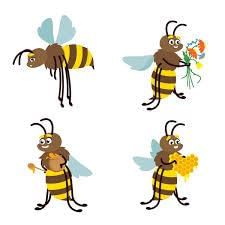
Why are bees so important?
- Bees play a crucial role in helping plants reproduce, which is vital for all life on Earth.
- Flowers attract bees by having colorful petals and a pleasing scent.
- Some flowers offer a sweet treat called nectar to bees as well.
Question for Pollination and seed spreadingTry yourself: Why are bees important for plant reproduction?View Solution
Flowers and Seed Production
- Flowers produce seeds after the pollen has been transferred from one flower to another. The losing flower goes through a process where it no longer requires its colorful petals, scent, or nectar, signaling its impending death.
- Before wilting completely, the flower initiates the production of seeds, which serve as essential components for various food items such as bread and breakfast cereals.
- Some seeds are enclosed within fruits like apples, plums, and pears, which are cultivated and consumed by humans.
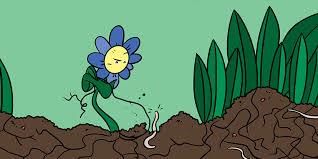
Seed Dispersal Mechanisms
- Plants disperse their seeds through various methods collectively known as seed dispersal. This process ensures the propagation and survival of plant species.
- Wind dispersal is a common mechanism where seeds are designed to float, glide, or spin through the air, aiding their transportation to new locations.
Examples of Seed Dispersal
- Wind Dispersal: Seeds of dandelions and maple trees are lightweight and equipped with structures that help them float in the wind to reach new areas for germination.
- Animal Dispersal: Some seeds have adaptations that attract animals, which inadvertently transport the seeds to new locations. An example is the burrs of burdock plants that stick to animal fur for dispersal.
- Water Dispersal: Seeds of plants like coconuts and water lilies are designed to float on water, aiding in their dispersal through rivers and oceans to find new suitable locations for growth.
- Explosive Dispersal: Plants like touch-me-nots (Impatiens) have seed pods that burst open upon touch, propelling the seeds away from the parent plant for dispersal.
How Plants Disperse Their Seeds
Plants utilize various methods to spread their seeds:
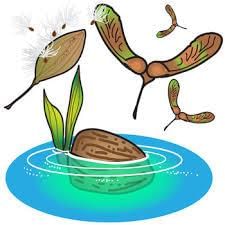
- Water Dispersal: Plants growing near water bodies like rivers or seas use flowing water to carry their seeds. For instance, coconuts are seeds spread by the sea.
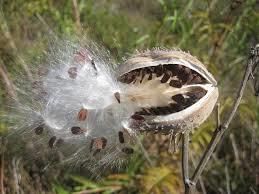
- Explosive Mechanisms: Some plants have seed pods that are designed to burst open and propel seeds away from the parent plant. Violets, for example, have exploding seed pods.

- Animal Dispersal: Many plants rely on animals to transport their seeds. These seeds may have hooks that attach to an animal's fur. Goosegrass is known to stick to animals and clothing.
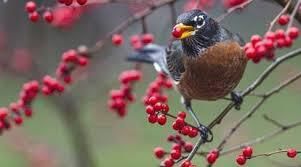
- Consumption by Animals: Plants produce tasty fruits around their seeds to attract animals. The seeds are dispersed when the animals eat the fruits and excrete the seeds in their droppings. For example, holly seeds have berries that are consumed by birds.
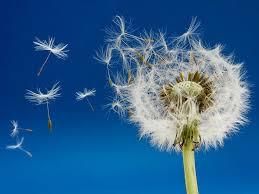
- Some seeds are carried by the wind and are designed to float, glide, or spin through the air. For Example, Dandelion seeds are dispersed by the wind.
The document Pollination and seed spreading | Year 3 Science is a part of the Year 3 Course Year 3 Science.
All you need of Year 3 at this link: Year 3
|
20 videos|23 docs|5 tests
|
FAQs on Pollination and seed spreading - Year 3 Science
| 1. Why are bees so important for pollination? |  |
Ans. Bees are important for pollination because they help transfer pollen from one flower to another, which is crucial for the fertilization and reproduction of many plant species.
| 2. How does pollination contribute to seed production in flowers? |  |
Ans. Pollination is essential for seed production in flowers as it allows for the transfer of pollen from the male reproductive organs to the female reproductive organs, leading to the formation of seeds.
| 3. What are some mechanisms of seed dispersal in plants? |  |
Ans. Some mechanisms of seed dispersal in plants include wind dispersal, animal dispersal (through ingestion and transportation), water dispersal, and explosive dispersal.
| 4. How do plants disperse their seeds effectively? |  |
Ans. Plants have evolved various ways to disperse their seeds effectively, such as producing seeds with adaptations for wind dispersal, relying on animals to carry seeds away from the parent plant, and using water to transport seeds to new locations.
| 5. What is the role of pollination and seed spreading in the ecosystem? |  |
Ans. Pollination and seed spreading play a crucial role in the ecosystem by promoting plant reproduction, genetic diversity, and the establishment of new plant populations, which ultimately support biodiversity and ecosystem stability.
Related Searches



















